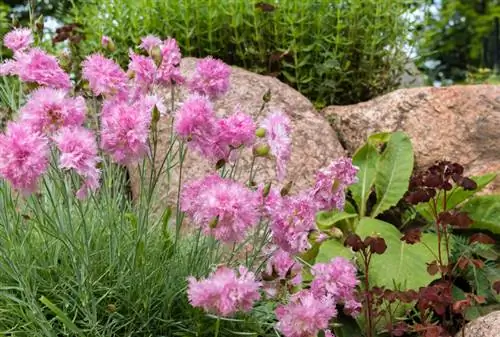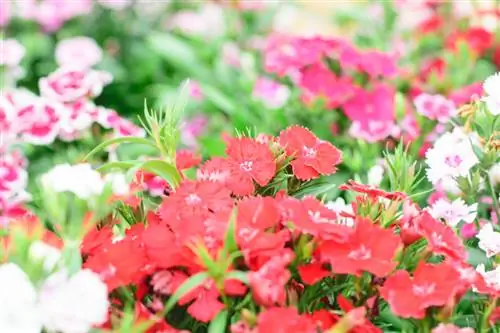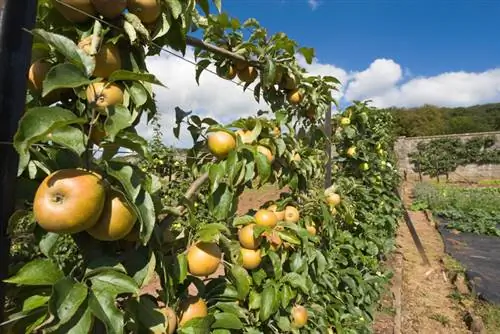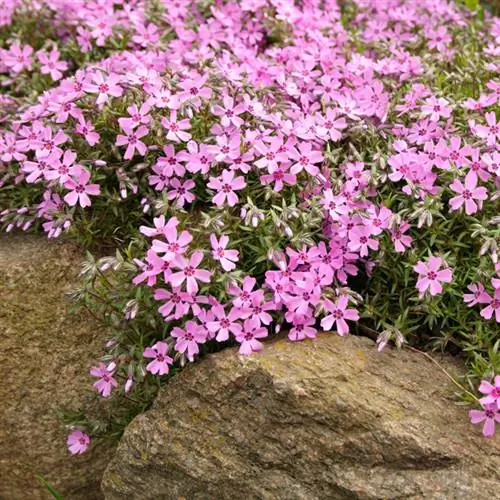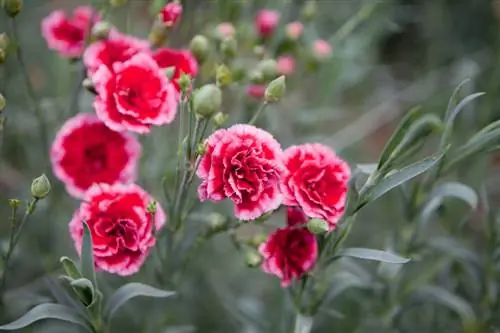- Author admin [email protected].
- Public 2023-12-16 16:46.
- Last modified 2025-01-23 11:21.
Cloves (Latin Dianthus) are found almost all over the world. Roughly estimated, there are around 600 different species with over 27,000 different varieties - plus numerous hybrid forms. Most carnations come from barren regions and are therefore perfectly adapted to the living conditions in the rock garden.
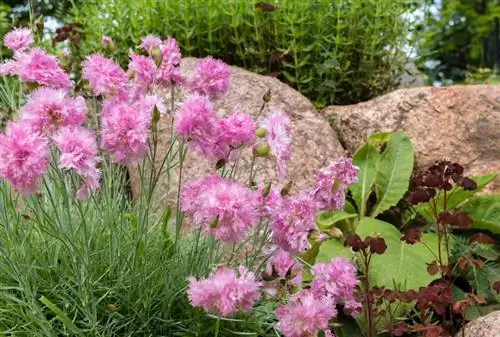
Which carnations are suitable for the rock garden?
Rock garden carnations are easy to care for and ideal for sunny, dry locations. Dianthus deltoides (heather carnation), Dianthus plumarius (feather carnation) and Dianthus gratianopolitanus (Pentecost carnation) are particularly recommended. Combine the carnations with sun roses, bluebells, gypsophila or cinquefoil and houseleek for varied planting.
Easy to maintain in a sunny rock garden
The group of plants is ideal for a sunny and rather dry rock garden, although the smaller species can also be cultivated very well in the cracks and cracks of dry stone walls or in troughs or pots. Carnations are easy to care for: basically all you need to do is remove dead stems. However, not all species are hardy, and sensitive carnation varieties not only need frost protection in winter, but above all moisture protection. When it comes to plant diseases, carnation rust, a fungal disease that occurs in damp conditions, is the main cause of concern for carnations.
Species-rich plant genus in numerous variations
Carnations can look very different: There are densely growing, mat-forming species as well as grassy or semi-shrub perennials. The leaves are usually grass-like (an indication of the frugality of this group of plants) and, depending on the species and variety, gray-green or green. The simple, delicate flowers in pink, violet, white or yellow are either solitary or in few-flowered umbels. The petals are usually (but not always) slit.
Proven species and varieties
Of course, not all Dianthus species and varieties are suitable for the home rock garden. Particularly beautiful and easy-care variants include these:
- Dianthus deltoides (heath carnation): The varieties 'Brilliant', 'Nelli', 'Splendens' and 'Leuchtfunk' all stand out with their red flowers with a ring pattern. They grow to around 15 centimeters high. 'Albus', on the other hand, flowers white. All heather carnations are green-leaved and grassy.
- Dianthus plumarius (feather carnations): The feather carnations with their delicate, feathery flowers have a very intense scent and often grow taller than all other types of carnations. The 'Diamant' variety grows to around 30 centimeters high and has a white, double flower. The 'Heidi', which grows up to 20 centimeters high, impresses with blood-red, double flowers. 'Ine', up to 25 centimeters high, has semi-double, white flowers with a red ring pattern. On the other hand, 'Pikes Pink', which is up to 20 centimeters high, has pink, double flowers.
Particularly beautiful in the stone and gravel garden: the peony carnation
The Peony carnations (Dianthus gratianopolitanus), which bloom between May and June, grow in dense cushions of gray-green to blue-gray mats. The slightly fragrant, pink, red or white flowers protrude from these. The light purple-pink flowering 'Eydangeri' and the purple-pink flowering 'Mirakel' are proven and richly flowering varieties.
Tip
Cloves can be wonderfully combined with sun roses, bluebells, gypsophila and cinquefoil or even houseleek.

